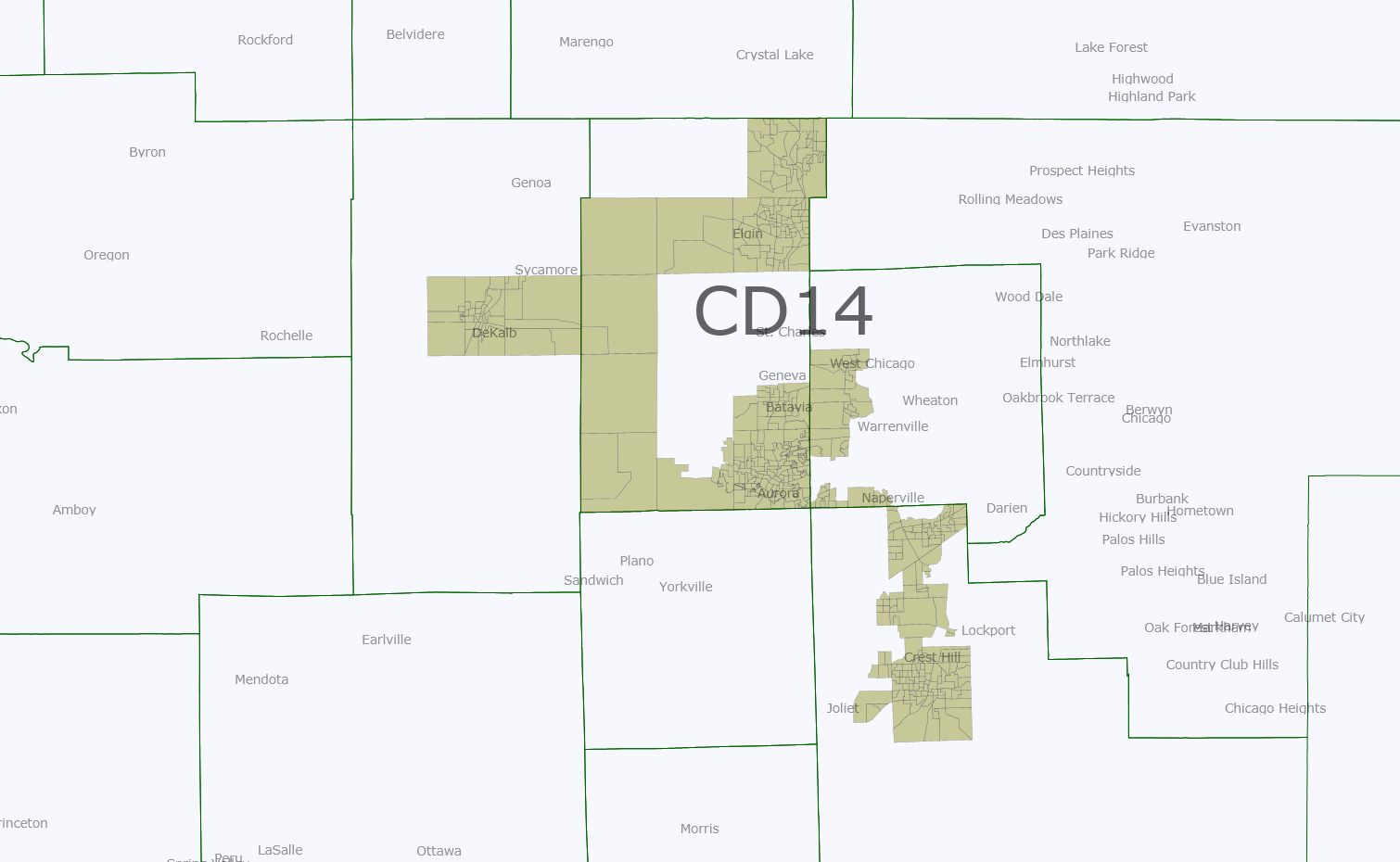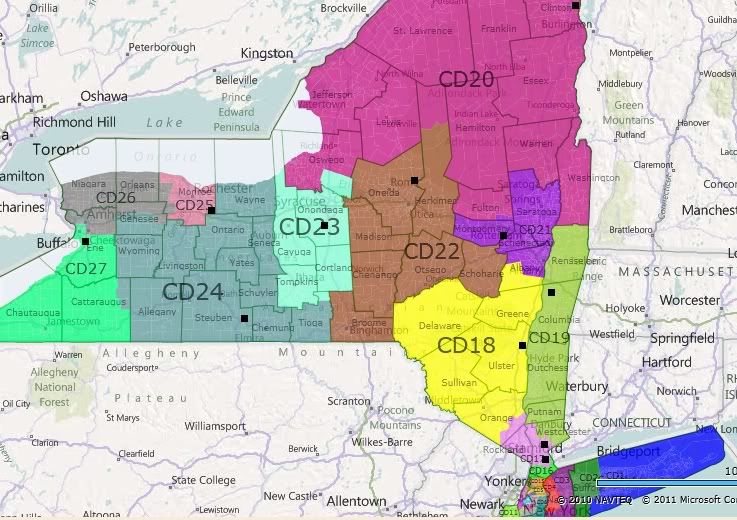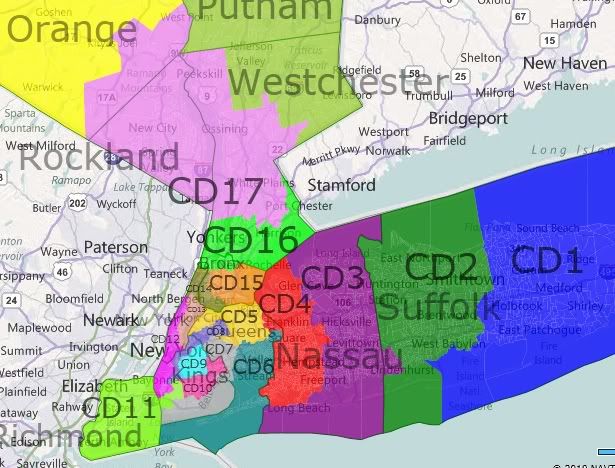At the end of last week the Cook Political Report came out with a set of district lines as an approximation of what the Citizens Redistricting Commission would create. The lead to their story reads:
What happens when politicians who have grown accustomed to the luxury of choosing their voters are forced to cede redistricting authority to a group of amateur citizen commissioners? In this gigantic laboratory of reform, more than a handful of incumbents are rightfully fearful they will be sacrificed for science. House Editor David Wasserman maps out some of the most talked-about speculative scenarios and outlines who could be in trouble. A “blank slate” commission map could endanger up to 15 incumbents and create as many as five new opportunities for Hispanic candidates
The Cook report identifies a number of Congressional members who are in the most gerrymandered seats and need to be concerned about redistricting. These include:
Republicans
Dan Lungren (CA-03)
Elton Gallegly (CA-24)
David Dreier (CA-26)
Gary Miller (CA-42)
Ken Calvert (CA-44)Democrats
Jerry McNerney (CA-11)
Sam Farr (CA-17)
Dennis Cardoza (CA-18)
Jim Costa (CA-20)
Brad Sherman (CA-27)
Howard Berman (CA-28)
Laura Richardson (CA-37)
Grace Napolitano (CA-38)
Bob Filner (CA-51)
and whoever wins the CA-36 special election in June.
Criticizing maps is easy, while drawing them can be a challenging task. Some of the shortcomings we identify in the Cook Plan could be a function of them not having access to the same data tools. However, given that this is the first widespread release of a legitimate plan from a trustworthy source, it requires some honest analysis.
Overall there are several things that are right and wrong with the plan.
What’s right about the Cook Maps:
1) The shift from the coastal area to the Central Valley and Inland Empire reflect a current reality – and an unavoidable result of the redistricting process.
2) Bay Area districts don’t cross the Bay Bridge or Golden Gate. This preserves county/city lines and communities of interest, but would weaken the city of San Francisco if the same rule was applied to the Senate districts.
3) The plan appears to keep more cities and counties intact than the 2001 plan.
4) While competitiveness is not an official criteria, it is meaningful in the public’s eye, and this plan makes several districts more competitive.
What’s wrong:
1) The plan plays way too loose with the Voting Rights Act, retrogressing several Section 2 districts, splitting the Section 5 county of Merced, and putting Kings County into a totally different seat. In fact, it appears to water down the Citizen Voting Age Latino Population in every Section 5 district except Herger (which is only 10% Latino CVAP currently).
2) Several districts, particularly the Dreier (CD 26) seat, cross county lines unnecessarily and oddly so that they run afoul with several criteria, including geographic compactness and maintaining communities of interest.
3) The City of LA does not seem to be preserved at all. Several little cities are merged with the larger city. This could be due to the inability to truly see the city lines in the application they were using.
The data tables on my page go through each district to review ethnic and partisan changes in the districts. The analysis was done only after redrawing the lines in Maptitude, the database/mapping software that is being used by the Commission.
The data used in this analysis comes from the latest US Census release and the Beta release of data from Political Data Inc. which allows census-block level analysis of party affiliation, voter turnout, results and electoral modeling.
Ethnic Breakdown Tables
The charts on my site provide ethnic breakdown of the 53 districts in the Cook plan. Section 5 and Section 2 Majority-Minority districts are highlighted in red. A Majority-Minority district for the purposes of this analysis is the most liberal interpretation – one that is majority Latino in 18+ Population or Citizen Voting Age Population.
Of the 11 Majority-Minority Latino or Section 5 seats in California, all but three of them have retrogressed under the Cook Plan.
Several other interesting seats are highlighted in orange. These include the Barbara Lee and Laura Richardson seats, both of which lose African American voting strength, while Mike Honda and Doris Matsui see slight increases in Asian populations.
Partisan/Voting Behavior Breakdown
The the second set of data charts voter registration and partisan turnout. This is built from census-block level geocoded County voter files and only available through Political Data Inc.
The double digit shifts AWAY from the party in control of that seat are noted in red. The only double-digit improvements are for Billbray and Royce, however the Billbray improvement could have to do with a district number-switch that was uncorrected from the Cook Plan.
Note on Data: Ethnic totals are 2010 official Census release for redistricting. Citizen Voting Age Population (CVAP) is estimates from the Census Department released in February 2011. Voter registration data is directly from the current statewide voter file managed by Political Data Inc.
This Memo availalable in PDF: Cook Uncooked
Maps and Charts: Cook Uncooked

















